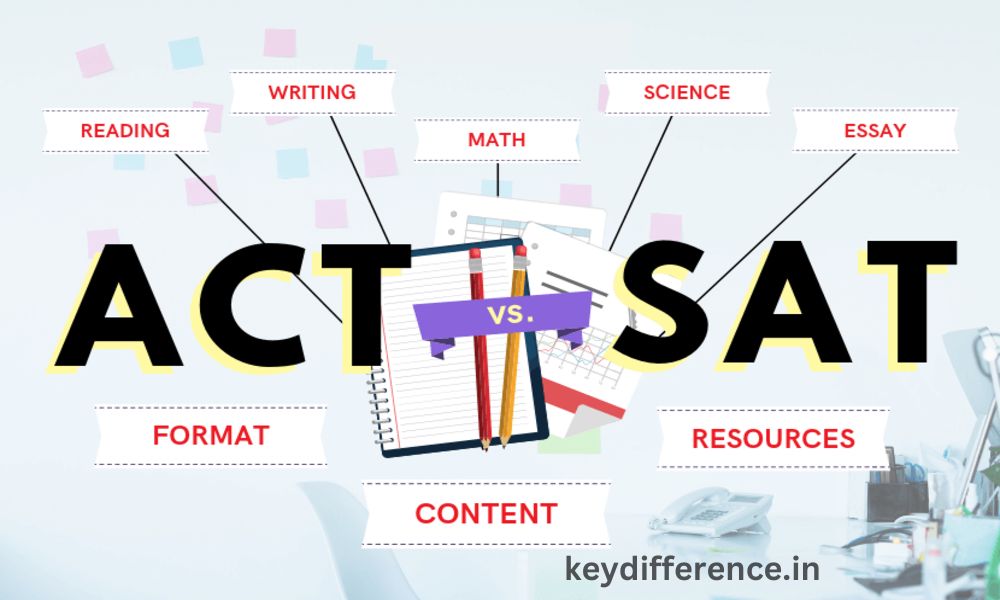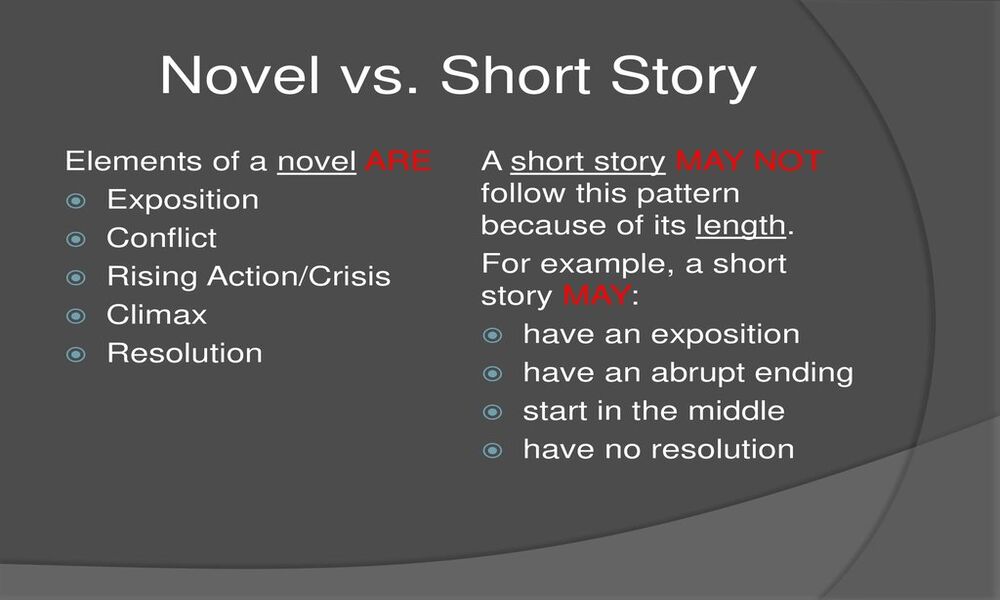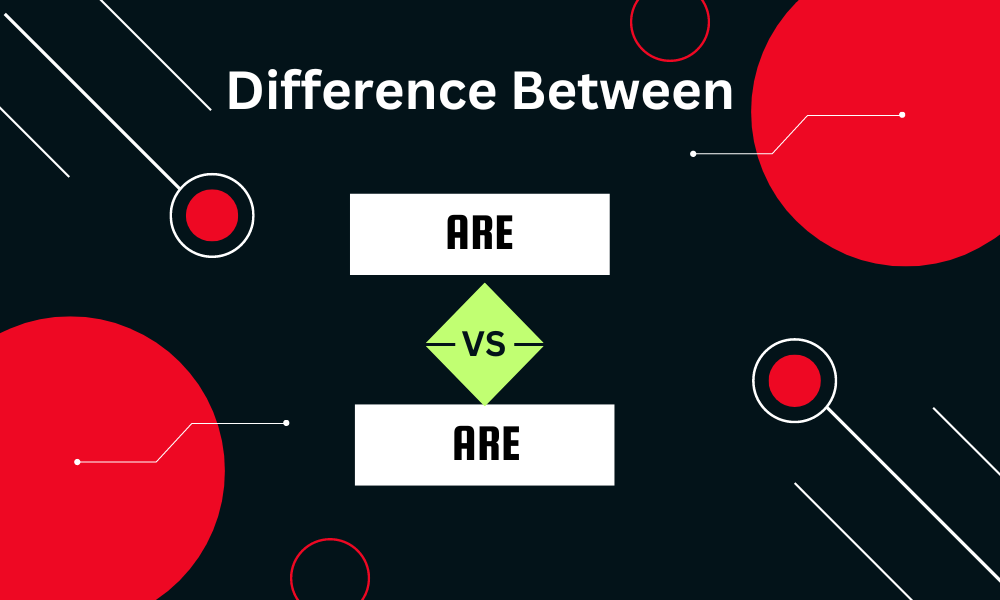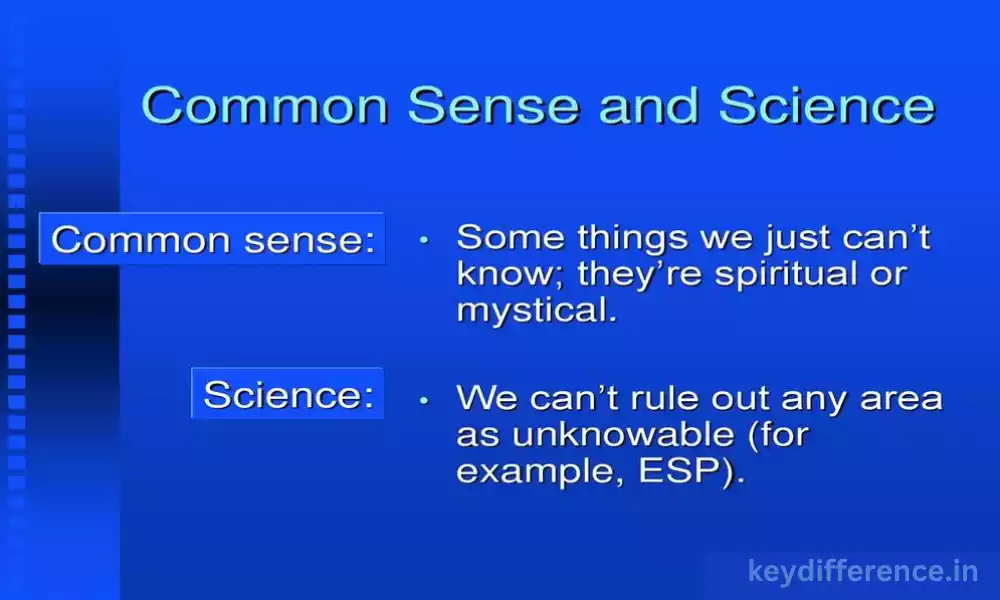Introduction
Standardized tests play an essential part in the college admissions process, helping universities evaluate prospective students academic readiness.Two widely recognized exams include the American College Testing (ACT) and Scholastic Assessment Test (SAT), designed to measure students’ knowledge and abilities across various subjects – serving as an unbiased measure for college admissions decisions. Recognizing and understanding their differences will allow you to optimize performance on either test.
The ACT and SAT tests, including their format, structure, content coverage, question types, scoring systems and test preparation strategies.By understanding both tests fully, students can make more informed decisions regarding which one to take and how best to prepare. Let’s begin by exploring their format and structure!
What is the ACT?
The American College Testing (ACT) exam is a standardized college admissions test used across the US. Accepted by nearly all colleges and Universities nationwide as an indicator of Academic readiness for higher Education, it assesses four core subject areas – English, Mathematics, Reading and Science as well as an optional Writing section which may be required by some institutions.
ACT, Inc. offers the ACT several times each year at designated test centers. Each section of the test has specific time allocations; at the conclusion of all sections students receive an overall composite score ranging from 1-36 that represents their scores across each section.
The ACT is known for its straightforward, factual questions that assess students’ understanding of subject content and problem-solving capabilities. The exam primarily aligns itself with what students learn in high school curriculums, with its goal to measure readiness for college-level coursework as well as success potential in a college environment.
Even though the ACT is accepted nationwide, students should research specific requirements of colleges they’re applying to to determine if it is preferred or required for admission. Learning more about its sections, question types and scoring system will give a firm foundation for comparing it against SAT exams in subsequent sections of this content outline.
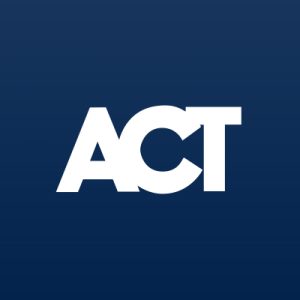
What is the SAT?
The Scholastic Assessment Test, commonly known as the SAT, is another well-Recognized standardized exam used for college Admissions in the US. Most Colleges and Universities accept it as an assessment of a student’s academic readiness and Potential success in higher Education. Designed and administered by The College Board – a nonprofit organization.
The SAT test evaluates students’ knowledge and abilities across three main sections: Reading, Writing/Language/Communication (RWLC), and Math. Some colleges also require an optional Essay section of the exam; all designed to assess critical thinking abilities such as critical analysis reasoning problem-solving writing ability.
Similar to the ACT, the SAT is administered in a timed format and each section receives specific allotted times for administration. Scoring ranges from 200-800 in each section with total possible scores reaching 1600 across Reading, Writing & Language, Math as well as Essay section which is scored separately between 6-24 points.
The SAT is famously known for focusing on reasoning and critical thinking skills, often asking more complex or abstract questions that assess a student’s ability to analyze, interpret and apply knowledge across contexts.
As with the ACT, students should research the admission requirements of colleges they’re interested in to determine whether or not taking the SAT will be necessary for admission. Comprehending its sections, question types, and scoring system will allow for an in-depth comparison between them in subsequent sections of this content outline.

Comparison Table of ACT and SAT
Below is a comparison table highlighting key differences between the ACT and SAT:
| Aspect | ACT | SAT |
|---|---|---|
| Sections | English, Math, Reading, Science, and optional Writing | Reading, Writing and Language, Math, and optional Essay |
| Timing | English (45 mins), Math (60 mins), Reading (35 mins), Science (35 mins), Writing (40 mins, optional) | Reading (65 mins), Writing and Language (35 mins), Math (80 mins), Essay (50 mins, optional) |
| Question Types | Multiple-choice with four answer choices | Mixed question types: multiple-choice, grid-in, and passage-based |
| Scoring | Composite score ranging from 1 to 36 (average of section scores) | A total score ranging from 400 to 1600 (main sections) and a separate score for Essay (6 to 24) |
| Content Emphasis | More curriculum-based, focusing on academic knowledge and problem-solving skills | Emphasizes critical thinking, reasoning, and abstract concepts |
| Science Section (ACT) | Included, assessing data interpretation and analysis skills | Not present |
| Calculator Usage | Allowed for the entire Math section | Allowed for part of the Math section (No Calculator and Calculator subsections) |
| Penalty for Wrong Answers | No penalty for incorrect answers | 1/4 point deduction for incorrect multiple-choice answers |
| Essay (Optional) | Optional essay with a separate score | Optional essay with a separate score |
It’s important to note that this is a general overview, and further research and consideration of individual strengths and preferences are essential when choosing between the ACT and SAT.
The following sections of this content outline will provide a more detailed exploration of each aspect for a comprehensive understanding.
Sections and timings
A. ACT Sections and Timings: (for this section only):
A) English 45 minutes
B (Math 60 minutes, C Reading 35 minutes
D Science (35 min), and (e optionally) Writing 40 min
Overview:
The ACT exam comprises four mandatory sections: English, Math, Reading, and Science. For English section tests measure grammar, punctuation, sentence structure, and rhetorical skills while Math covers algebra, geometry, and trigonometry as part of its examinations.
The Reading section measures reading comprehension skills; The Science section evaluates interpretation, analysis, evaluation, and problem-solving within scientific disciplines; The Writing section may or may not be required by some colleges and focuses on essay writing abilities;
And last but not least are B. SAT’s Sections and Timings cover: 1 Reading for 65 minutes 2 Science for 34 minutes and 35 Writing/Language
Math (No Calculator, Calculator sections): 80 minutesecriture For Essay (optional), allow 50 minutes
Overview:
The SAT test includes three mandatory sections, Reading, Writing & Language, and Math. In particular, Reading includes passages from literature, history, social sciences, and natural sciences. Writing and Language tests evaluate grammar, punctuation, sentence structure, and analysis of passages; while Math covers algebra, problem-solving, data analysis, and advanced math topics.
The Math section is divided into a No Calculator section (25 minutes) and a Calculator section (55 minutes). The Essay section may also be required by certain colleges and serves to assess both analytical and writing abilities.
Understanding each section and its timings is integral for effective test preparation and time management during an exam. In the following content outline, we’ll explore question types, strategies, and scoring systems specific to each ACT and SAT section.
Question types and strategies
ACT Question Types and Strategies:
An English section will feature multiple-choice questions designed to assess grammar, usage, and rhetoric.
Strategies: Focusing on grammar rules, revising sentence structure, and assessing writing effectiveness are among the keys to effective writing. B. Math: Multiple choice questions testing algebra, geometry, trigonometry, and problem-solving skills will be presented here.
Strategies: Refresh mathematical concepts, practice problem-solving techniques, and use calculators effectively. C. Reading: Multiple choice questions on passages from various subjects will also be included as part of this assessment.
Strategies: Skim passages quickly, underline key information, and refer back to the text for answering questions accurately. D. Science: mes Multiple choice questions that assess data interpretation, analysis, and scientific reasoning will also be included on the exam.
Strategies: Gaining insight into trends in data, understanding experimental design, and effectively reading graphs, tables, and charts. * Writing (Optional): Additional essay prompt requiring students to analyze a given perspective or issue.
SAT Question Types and Strategies:
Reading: For an optimal score on the reading portion of the exam, readers need to spend sufficient time practicing reading comprehension skills before beginning their SAT preparations. Multiple-choice questions from literature, history, social sciences, and natural sciences will be presented. You should know how to skim passages quickly to identify main ideas, make inferences and analyze the author’s tone/purpose of passages before answering multiple-choice questions on these passages.
Writing and Language Skills: Multiple-choice questions designed to assess grammar, usage, and sentence structure within passages.
Strategies: Focus on grammar rules; increase sentence clarity and conciseness; identify inconsistencies logically.
Math: Multiple-choice and grid-in questions covering algebra, problem-solving, data analysis, and advanced mathematics concepts. It includes multiple-choice and grid-in questions covering algebra, problem-solving, data analysis, and advanced mathematical concepts.
There will also be strategies requiring applying mathematical concepts effectively through logical reasoning as well as effectively using both calculator and non-calculator sections effectively. mes A written essay (optional) may also be given.
Optional essay prompt requiring students to analyze a provided passage and create an in-depth and well-reasoned argument. nta Strategies include identifying its structure, developing a convincing thesis statement, supporting evidence with evidence, and using effective writing techniques.
Successfully passing both exams requires understanding question types and employing strategies tailored specifically to them, along with scoring systems specific to these tests. The next section of this content outline will delve into these systems of measurement.
Scoring system
Scoring System of the ACT:
Each section of the ACT (English, Math, Reading, and Science) is scored on a scale from 1-36 and then converted back into raw scores through an equating process for fairness across various test forms.
The scaled scores for all four sections are averaged to calculate a Composite Score that ranges from 1-36. An optional Writing section is scored separately on a scale from 2-12 and does not contribute towards the Composite Score calculation. Students receive a Score Report which details the Composite Score, individual section scores and optional Writing score (if taken).
SAT Scoring System: Our test has two main sections – Evidence-Based Reading and Writing (EBRW) and Mathematics – where scores will be assigned for both sections.
Each section is scored between 200 and 800 on a scale from 200-800, using an equating process that ensures fairness across different test forms.
Total Score (ranging from 400 to 1600). For an optional Essay section, scaled scores range from 6-24; this score will also be reported separately from Total Score.
Students receive a Score Report detailing their Total Score, EBRW, and Math section scores as well as any optional Essay scores (if taken).
Understanding the scoring system is integral for understanding test results. It is important to remember that neither the ACT nor SAT provide a pass/fail system, instead colleges and universities use scores as part of admission criteria when assessing applicants. In the following sections of this content outline, we will explore additional considerations between these tests, such as test preparation strategies and factors to keep in mind when choosing one or the other.
Test Preparation and Strategies
Official Test Prep Materials:
Both the ACT and SAT provide official practice materials such as practice tests, sample questions, and study guides via their respective websites.
Third-Party Study Guides and Online Resources: Students can familiarize themselves with test format and content through these resources, helping them prepare for what may come their way on test day. Among them are study guides from third parties as well as third-party online resources which offer a realistic representation.
Third-party publishers and online platforms often provide study guides, books, online courses and practice questions tailored specifically for either the ACT or SAT exam. These resources can provide additional strategies, tips, and practice opportunities to aid preparation.
Test-Taking Strategies Timing and Pacing:
Understand and practice managing time efficiently during practice tests. Pace yourself accordingly so that all questions can be completed within the allotted time while maintaining accuracy without rushing through.
Guessing Strategies: Both the ACT and SAT do not penalize for incorrect answers, so when in doubt it may be advantageous to make educated guesses when answering a question. Eliminate obviously incorrect responses in order to increase the chances of guessing correctly. Focus on Individual Strengths: Establish your strengths and weaknesses for each section, then allot study time accordingly. Focus on strengthening weak areas while upholding and reinforcing strong ones.
Extra Tips
Practice Regularly: Consistent practice over an extended period is far more beneficial than last-minute cramming sessions. Create a study schedule, setting aside enough time each day for practicing each section.
Review Content and Concepts: Gain a firm grasp on all of the content and concepts discussed within each section, reviewing relevant subject areas, formulas, grammar rules, and reading strategies as appropriate.
Conduct Practice Tests: Take full-length practice tests to replicate the test day experience and measure your progress. Evaluate and analyze your performance to identify areas for enhancement.
Find Support: Join study groups, utilize tutors, or utilize online forums in order to receive additional guidance, support, and clarification of difficult concepts. Preparing for either the ACT or SAT requires time, dedication, and effective study strategies.
By making use of official resources and third-party materials as well as using proven test-taking strategies students can enhance their preparation and gain more confidence for test day. In the next section, we will discuss factors to keep in mind when choosing between ACT or SAT exams.
Test prep resources
Official Practice Materials for Exam Prep:
ACT: (act.org) provides free practice tests, sample questions, and test preparation resources. For additional practice questions and personalized study plans. Plus progress tracking. ACT Online Prep offers a comprehensive online preparation program available for purchase offering additional practice questions with personalized study plans as well as progress monitoring capabilities. College Board, the organization that administers the SAT, offers official practice tests, sample questions, and study resources on its website (collegeboard.org).
Official SAT Study Guide: Published by the College Board, this book features eight official practice tests with explanations and strategies for each section.
Online Prep Courses and Tutoring Services: For those preparing for their SAT examination online preparation courses are an option as are tutoring services for these sections of the test. Numerous online platforms and test prep companies provide comprehensive ACT and SAT courses, which include video lessons, practice materials, and personalized tutoring services. Khan Academy, Princeton Review, Kaplan, and PrepScholar are some of the more well-known examples.
Furthermore, Study Guides and Books may also be beneficial. Different publishers provide study guides and books tailored specifically for ACT/SAT test preparation, offering strategies, content review, and practice questions designed to familiarize students with test formats while developing skills.
“The ACT Prep Black Book” by Mike and Patrick Barrett and “The SAT Prep Black Book” by them both provide helpful resources. Mobile Apps and Online Resources:Mobile apps such as ACT Up and SAT Up offer practice questions, flashcards, and study tools for on-the-go preparation for both the ACT and SAT exams. Online resources like Quizlet and Study.com also provide interactive study materials, flashcards, and practice quizzes tailored specifically towards both tests.
Students should explore various test prep resources and select those that align with their learning style and goals. Official practice materials, online courses, study guides, and practice tests can all provide effective preparation experiences. In the next section, we will look at factors to keep in mind when choosing between ACT and SAT as test preparation options.
Third-party study guides and online resources
Official Practice Materials for Test Prep Resources:
ACT:
The official ACT website (act.org) offers free practice tests, sample questions, and test prep resources. For an additional fee, ACT Online Prep offers additional practice questions, personalized study plans, and progress-tracking features to enhance test-taking preparation. College Board, the organization that administers the SAT, offers practice tests, sample questions, and study resources through its website (collegeboard.org).
Official SAT Study Guide: Published by the College Board, this book includes eight official practice tests with detailed explanations and strategies for each section.
Third-Party Study Guides and Books: For those wanting additional preparation to help take their SAT examinations.
Different publishers provide study guides and books specifically crafted to prepare students for ACT/SAT examinations. These resources often offer strategies, content reviews, and practice questions to assist with improving students’ skills. Examples include The Princeton Review, Barron’s SAT/ACT Books, Kaplan SAT/ACT Prep Books, and McGraw-Hill Education’s SAT/ACT Books.
Online Test Prep Platforms:
Online platforms offering comprehensive ACT and SAT prep courses, practice questions, study materials, interactive lessons, video tutorials, and custom study plans may offer comprehensive preparation courses and practice questions to prepare you for the ACT and SAT examinations. Examples include Khan Academy, PrepScholar, Kaplan Online Prep, and Princeton Review Online.
Mobile Apps and Online Resources:
Mobile apps and online resources offer additional study materials, practice questions, flashcards, and study aids for on-the-go preparation of tests like Magoosh ACT Prep, Ready4SAT, and Varsity Tutors SAT/ACT prep tests.
Study.com, Quizlet, and forums dedicated to the ACT/SAT can also provide valuable resources and study aids free of charge.
For optimal study guides and online resources, it is important to carefully consider factors like publisher/platform reputation, quality and relevance of content, user ratings, and compatibility with your preferred learning style.
Exploring multiple resources may help provide a well-rounded knowledge of test contents and strategies; in the next section, we will cover test-taking strategies for both ACT and SAT examinations.
Focus on individual strengths
Official Practice Materials for Test Prep Resources:
ACT:
(act.org) provides free practice tests, sample questions, and test preparation resources. For a fee-based option that offers additional practice questions and personalized study plans. As well as tracking progress. College Board, the organization which administers the SAT exam, offers official practice tests, sample questions, and study resources through its website (collegeboard.org).
Official SAT Study Guide: Published by the College Board, this book includes eight official practice tests with explanations and strategies for each section.
Third-Party Study Guides and Books: For additional support during your preparations for taking the SAT Exam.Publishers offer study guides and books tailored specifically for ACT/SAT exam preparation, which often offer additional strategies, content review, and practice questions to help students enhance their abilities. Examples include The Princeton Review, Barron’s SAT/ACT books, Kaplan SAT/ACT Prep books, and McGraw-Hill Education SAT/ACT books.
Online Test Prep Platforms:
Online platforms offering comprehensive ACT and SAT preparation courses, practice questions, study materials, and interactive lessons such as video tutorials offer comprehensive preparation courses. Customized study plans may also be provided. Khan Academy, PrepScholar, Kaplan Online Prep and Princeton Review Online are among the many resources available on mobile apps and the internet.
Mobile apps and online resources offer additional study materials, practice questions, flashcards, and flashcards for on-the-go preparation for exams like the ACT Prep test. Popular examples of such resources are Magoosh ACT Prep, Ready4SAT and Varsity Tutors.Study.com, Quizlet and ACT/SAT-specific forums offer free study aids and resources. B. Exploit Individual Strengths
Recognizing Strengths and Weaknesses:
Practice tests or diagnostic tools should help identify your strengths and weaknesses for each section of the ACT or SAT exam, including what types of questions/content areas where you perform well as well as where improvement needs to take place.
Allow Yourself Plenty of Study Time:
Dedicate more study time to areas in which you require improvement while simultaneously strengthening your strengths. Focus on understanding key concepts, practicing relevant skills, and reviewing challenging topics.
Bring Targeted Resources into Play:
Utilize study guides, practice questions, and online resources that address your areas of weakness directly. Utilize sources that offer in-depth explanations, strategies, and targeted practice exercises tailored specifically for them.
Seek Additional Support:
Consider hiring a tutor or joining a study group for tailored guidance and support. An experienced tutor can tailor a study plan around your unique strengths and weaknesses, providing invaluable advice and direction.
By taking into account your individual strengths and weaknesses, you can create an efficient study plan tailored to you that maximizes preparation for either the ACT or SAT exam. Utilize resources that meet your specific needs as needed for further support; in the next section we will also discuss tips for test preparation.

